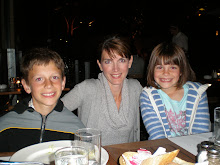


When we were living in Nigeria my mother described Chad as the most benighted hole of a nation on earth. Not nice, I know, but it was when Lagos was in a state of emergency because the water and electricity workers had gone on strike and my mother was fed up with all of West Africa.
Chad may not be the most benighted hole but it does have a painful history, harsh climate, few natural resources, lack of infrastructure and torn by conflicts between nomadic desert herders and ethnic groups. It has also been ravaged by droughts and famine and with all this combined you can see why it’s one of the world’s poorest countries.
The first time my dad went to Chad, since he was in charge of the security for the U.S. Embassy there in the early 1970s, he said it was a backward and dreary country. He told us that the people were suffering because of the Sahel drought that affected the land areas directly south of the Sahara desert and stretched across Northern Africa. The Sahel drought was a series of droughts starting in the 17th century and famine and dislocation followed the severe droughts. There was one on a massive scale from 1968 to 1974 and then again in the mid 1980s. During these two droughts 100,000 people died and left 750,000 dependent on food aid. When my dad was there in 1975 he said there were truck loads of U.S. grain sitting at the Chad-Nigeria border never to be delivered because Chad’s president’s wife owned a trucking firm and they refused to let Nigerian trucks bring it in. It’s hard to even comprehend the cruelty in that. Later, in 1975, her husband, president Francois Tombalbaye was killed by a group of soldiers who then installed, Felix Malloum, a general in the army, as the new head of state.
Traveling to Chad is unadvisable. The entire border area with Sudan is very dangerous and the police and soldiers are a nervous bunch these days as the government continues to lose its grip on the country. Despite this, there are a few reasons to visit, if you are up for the challenge. Chad’s capital, N’Djamena, has a thriving live-music scene, you could also check out the wildlife at the Zakouma National Park or experience the exotic desert landscapes of Ennedi.
For our Chadian meal we had fried fish cooked with garlic, tomatoes and cayenne pepper and, to go with the fish, I cooked courgette with peanuts. Courgettes are zucchinis and after boiling them I mashed them with butter and sprinkled them with crushed peanuts.
It was a tasty and enjoyable meal. Although later I realized how ironic it was that I cooked fish for this country when it has experienced years of drought. Perhaps it wasn’t the best choice.
Chadian Fried Fish
6 medium fish (tilapia or perch)
2 garlic cloves, chopped
2 TBSP flour
5 TBSP oil
3 tomatoes
salt, pepper and cayenne pepper
Pierce the fish with a knife and place the garlic pieces inside. Dip the fish in the flour then heat the oil in a frying pan and fry the fish on high heat. When the fish is golden brown add the tomatoes and cover the pan and allow to simmer on low heat for 40 minutes. Add a little water if necessary and serve on rice.
Courgette with Peanuts
4 small courgettes (zucchini)
1/2 tsp salt
2 TBSP butter or oil
220g unsalted peanuts, ground to a fine powder
Simmer the whole courgettes in salted water until tender. Combine the courgettes and butter then mash to a smooth consistency. Top with the nuts and serve.

No comments:
Post a Comment